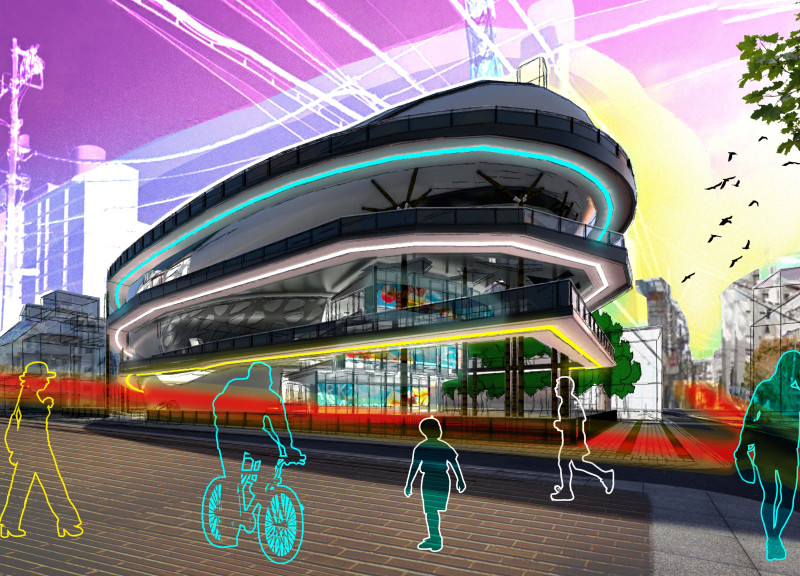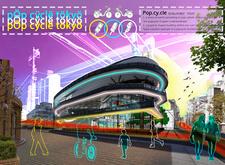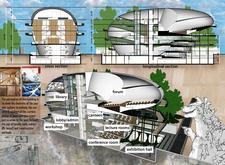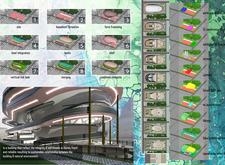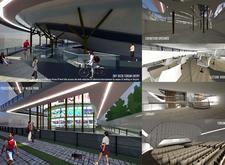5 key facts about this project
**Project Overview**
Pop Cycle Tokyo is located in a vibrant urban context that reflects the rich tapestry of popular culture in Tokyo, Japan. The project aims to serve as a multifunctional hub, integrating contemporary architectural elements with community-oriented spaces, catering to a diverse user demographic. It is designed to not only fulfill practical needs but also to foster social interaction and cultural exchange among visitors.
**Architectural Form and Spatial Strategy**
The design is characterized by smooth, flowing lines and a modular structure that evokes movement, symbolizing the dynamic nature of pop culture. Layered, cantilevered sections enhance the visual fluidity of the building, creating a sense of energy throughout the form. The spatial organization is methodically planned, with distinct zones including a library for quiet study, a forum equipped for community gatherings, and an exhibition hall for showcasing cultural displays. This arrangement promotes user engagement and facilitates easy navigation throughout the various functional areas.
**Materials and Sustainability**
The project employs a deliberate selection of materials, prioritizing sustainability through the use of locally sourced components. Wood is extensively used for its aesthetic warmth and connection to traditional Japanese design, while glass elements facilitate transparency and visual connectivity with the surrounding environment. Concrete and steel provide structural integrity and durability. This strategic focus on materiality not only enhances the overall aesthetic but also aligns with contemporary principles of sustainable architecture, establishing a responsible relationship between the built environment and its natural context.
**Community Integration**
Outdoor spaces, such as the Pedestrian Lane of Media Park, create a vibrant atmosphere conducive to community engagement. These landscaped areas promote interaction among residents and visitors, merging urban life with natural elements. The careful integration of greenery and public pathways ensures that the architectural framework complements its environment, reinforcing the project's commitment to enriching the urban landscape while fostering a sense of community.


